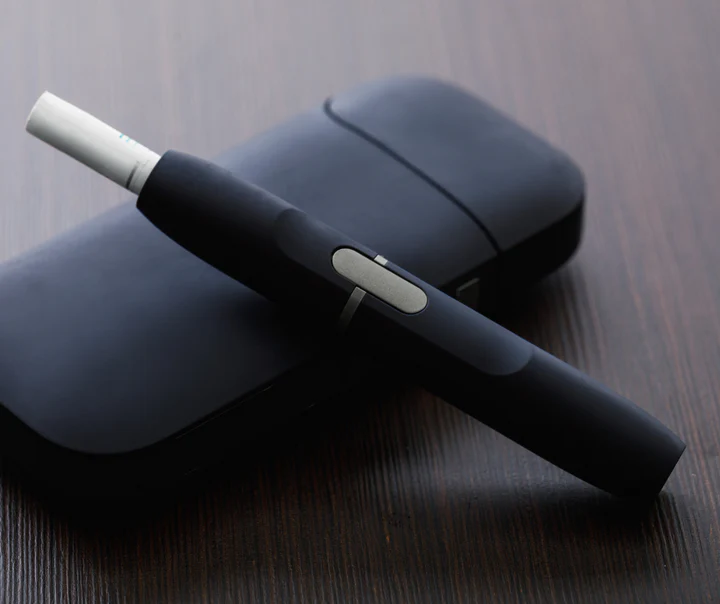
Time to talk ‘tobacco’ – heated tobacco products, to be precise.
A recent article talking about the proposed ban by the EU on flavoured heated tobacco products used the term ‘e-cigarette’ in the article headline, only mentioning in the text that this is about ‘heated tobacco products’ and not e-liquid vapes. Headlines like these lead people to group electronic nicotine delivery systems (ENDS) that use e-liquid with these heated tobacco products, or ‘HTPs’, that still use tobacco.
This article will explain some of the significant differences between the two products, and why ENDS should be presented as an altogether different product to HTPs.
Heated tobacco products history
Heated tobacco products were first pioneered in the 1980’s, so they have been around for a while. Tobacco companies have been developing alternative heated tobacco products since 1988, with varying degrees of success. Most were withdrawn within a year of release, with more success occurring in recent years.
There is huge pressure that is still mounting on eliminating the biggest cause of preventable death worldwide, which is smoking. With the emergence of the ‘e-cigarette’, tobacco companies have been playing catch up ever since, whether in the form of buying up vape companies or launching their own product to compete with e-cigs; this is where heated tobacco products come in.

How do HTPs work?
Heated tobacco products are very different from the e-liquid vapes many of us are now familiar with. There are a few different designs out there, but where an e-cigarette heats up e-liquid to turn it into an aerosol which can be inhaled, heated tobacco products heat dried tobacco to temperatures no higher than 350°C to create an aerosol to inhale. By limiting the temperature, heated tobacco systems aim to prevent burning the tobacco because it leads to the formation of more nasty chemicals in cigarette smoke.
Early versions of HTPs still produced high levels of carcinogens and carbon monoxide, which may explain why many early attempts at these products were withdrawn relatively soon after their release.
Today, there are two main types of heated tobacco product – one that uses a carbon tin wrapped in glass fibres where the user lights the tip and the dried tobacco is heated to create an aerosol. The other style uses wrapped tobacco sticks placed in a heating device that pierces the paper wrap and heats the tobacco, creating an aerosol.
How do heated tobacco products differ from e-cigarettes?
The e-cigarette uses a battery to heat a coil, which in turn heats the e-liquid containing the all-important nicotine into an aerosol which is inhaled into the lungs, to absorb the nicotine into the blood.
All these devices aim to deliver nicotine via the lungs, creating a similar sensation to smoking a traditional cigarette. The difference lies in the substance that is being heated up.
In e-cigarettes, it is e-liquid that is heated up. E-liquid is made up from propylene glycol (PG), vegetable glycerine (VG), flavourings, and nicotine. You can check out our blog, ‘What Exactly is in Vape Juice? Here is Everything You Need To Know’ for a more comprehensive breakdown of what is in your e-liquid!
HTPs heat up tobacco - we know that there are many nasty chemicals formed by burning tobacco, and so heated tobacco products aim to reduce the harm by preventing the tobacco from burning.
This does mean that HTP users are still getting chemicals from the tobacco plant, and this includes heavy metals like cadmium and mercury that the tobacco plant naturally takes in from soil – this is not the case with e-liquid e-cigarettes. In addition, two recent studies did show increased carbon monoxide levels in exhaled breath after HTP use, indicating that combustion may still be happening in some designs for HTPs.
E-liquids, by comparison, only contain nicotine from the tobacco plant (and even this can be synthesised), so you don’t get the other chemicals found in tobacco

Why ban flavoured HTPs?
The EU’s Commissioner for health and food safety Stella Kyriakides said the proposed banning of flavoured heated tobacco products is an effort to ‘make smoking as unattractive as possible to protect the health of our citizens and save lives’ and prevent youth appeal. This was proposed in response to an observed 10% increase in sales of HTPs in more than five EU member countries. It’s interesting to note that no consideration is made that this increase could be down to smokers seeking a less harmful alternative…
Studies have shown that HTP use delivers significantly less toxins than tobacco cigarettes. The addition of flavourings is likely to lead to the production of some toxins, but as the tobacco isn’t burning, we can expect the levels of these toxins to be incredibly low. This means that even flavoured HTPs are significantly less harmful than smoking cigarettes.
The ‘flavoured’ argument appears to originate from the marketing in certain countries of e-cigarettes, where flavours were named with child-appeal, and packaging made bright and colourful to attract the eye. This led to a rise in youths using e-cigarettes in the USA. This marketing strategy was identified and clamped down on, and flavoured e-cigarettes banned in the USA to avoid the product’s appeal to the youth market.
The problems with banning flavours
One study that analysed data from tobacco smokers who had at least tried an e-cigarette and found that the taste was the most cited reason for choosing their e-cigarette. In the group aged 15-24, external packaging and design features were rated as the more important aspects of choosing their device. This study suggests that there are more important factors than flavour that encourage the youth to try e-cigarettes. We were all young once, and something being outlawed is only more reason to give it a try for an adventurous, rebellious youth!
Being unable to obtain flavoured products may lead to consumers trying to make their own flavours, without a full understanding of the flavourings that are safe for this purpose - this could end up being damaging to the consumer.
From the smoker’s perspective, having a tobacco product with flavour you enjoy will encourage you to choose to use the device over smoking cigarettes. Given the addictive nature of cigarettes, every advantage that a smoker has when trying to quit smoking should be exploited, and enjoying the taste is a big one that I believe should not be so quickly cast aside.
The arguments for banning flavoured HTPs
Heated tobacco products may be marketed as ‘95% less harmful than smoking’ but it is important to understand that this figure is not from a health authority. With e-cigarettes, Public Health England reviewed evidence, concurring with the Royal College of Physicians that e-cigarettes are unlikely to surpass 5% of the damage done by tobacco cigarettes – so the official stand is that electronic cigarettes are 95% less harmful than e-cigarettes.
Heated tobacco products, while they appear to be less damaging than smoking, have a lifetime cancer risk higher than the lifetime cancer risk from e-cigarettes. There is a good argument for only allowing the tobacco alternative that has the largest reduced risk, which would see the banning of all heated tobacco products in the EU, if the aim is to eliminate deaths from tobacco.
A data set for the IQOS, a heated tobacco product manufactured by Philip Morris International, indicated that out of 24 biomarkers of potential harm, there was no statistical differences between people using the IQOS and tobacco cigarettes in 23 of 24 biomarkers. Given that this is Philip Morris International’s own data, this further indicates that heated tobacco products do not reduce harm at the same magnitude as e-cigarettes.
Why Heated Tobacco Products are Not The Same as E-cigarettes - Conclusion
Many of the articles covering this story have already made amendments to clarify that e-cigarettes are not included in this ban, but with headlines of this nature, it is no wonder that the e-cigarette industry is facing an uphill battle to inform members of the public of the facts.
Heated tobacco products contain tobacco, and while they don’t burn the tobacco, heating it does release chemicals that we know to be harmful, including heavy metals and carbon monoxide. Is it a step in the right direction for smokers? Yes. Is there a better option on the market? Yes.
E-cigarettes do away with tobacco and the chemicals found within - and remember: they are 95% less harmful than smoking, according to Public Health England!
